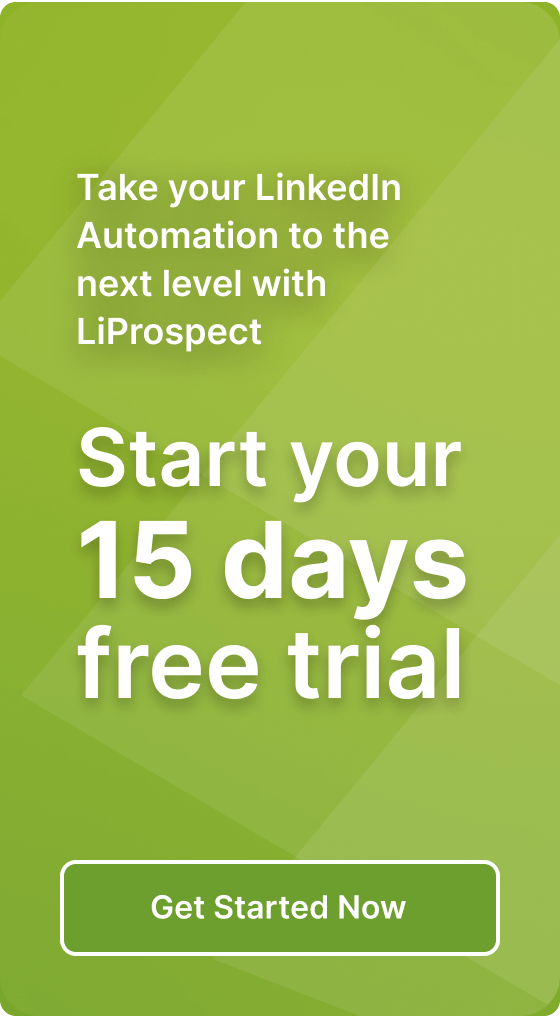How to Handle Negative Feedback in LinkedIn Outreach Campaigns?

Hey LinkedIn Outreach Specialists! Imagine this: You’ve worked hard on your LinkedIn campaign, picking out the right people and sending them messages to get them interested. But then, instead of positive or promising replies, you get hit with negative feedback. It’s tough. But don’t worry, you’re not alone.
Getting negative feedback on LinkedIn is like a big storm coming your way – you know it’s coming, but you can handle it with the right skills. As pros, we get that we need to connect with people on LinkedIn while also respecting their space. LinkedIn isn’t just for fun; it’s where professionals meet. So when we get negative feedback, it’s not just about fixing a lead; it’s about keeping our good name online. But don’t panic! With some good strategies and staying strong, you can handle anything that comes your way and keep building real relationships with your contacts.
Understanding the Unique Challenges
Let’s dig into the specific hurdles we encounter in our job. Unlike other marketing methods, LinkedIn outreach happens in a professional setting where being genuine matters a lot. When someone we reach out to feels overwhelmed or uninterested, it’s not just about losing a potential lead. It’s more significant than that. It could harm our reputation and how others see us on the platform.
Think about it: LinkedIn isn’t your typical social media site. It’s where professionals connect and do business. So, when we receive negative feedback, it’s not just about fixing a lead or making a sale. It’s about preserving our integrity and trustworthiness in this professional space.
Imagine you’re at a networking event, and someone approaches you with a pushy sales pitch. How would you feel? That’s kind of like what happens on LinkedIn when we bombard people with messages that don’t feel personal or relevant. It can rub people the wrong way and tarnish our image as professionals.
Now, let’s dive into some practical strategies to handle negative feedback gracefully and turn things around for the better.
Practical Strategies for Damage Control
So, how do we handle negative feedback in a way that maintains our professionalism and authenticity? Here are some practical strategies:
1. Acknowledge and Apologize
If a prospect expresses discontent or frustration, it’s crucial to recognize their feelings and extend a genuine apology. By acknowledging their concerns, we show that we value their feedback and are committed to addressing any issues.
For example, if a prospect tells us they didn’t find our message relevant, we can respond with sincerity by saying,
“Hi [Prospect’s Name], I’m sorry to hear that you didn’t find our message relevant. Your feedback is valuable to us, and we’ll do our best to ensure a better experience in the future.”
This not only expresses regret for any inconvenience caused but also reassures the prospect that their feedback is taken seriously. It sets the stage for constructive dialogue and demonstrates our commitment to continuous improvement. Acknowledging and apologizing not only helps mitigate the immediate impact of negative feedback but also lays the foundation for building stronger, more meaningful connections with prospects.
2. Provide Value
Negative feedback can often stem from a perceived lack of value in our messages. Therefore, it’s essential to address this concern directly by highlighting the benefits and value proposition of our offering.
For example, if a prospect expresses concern about the relevance of our message, we can respond by saying,
“Hi [Prospect’s Name], I understand your concern. Allow me to elaborate on how our product/service can address [specific pain point] and provide tangible benefits to your business.”
By focusing on the value we can deliver and aligning our message with the prospect’s needs, we not only address their concerns but also demonstrate the relevance and potential impact of our offering. This approach fosters a more positive and constructive dialogue, ultimately leading to stronger connections and potential opportunities.
3. Personalize Your Approach
Automated messages can sometimes come across as impersonal or spammy. Make an effort to personalize your responses and show genuine interest in the prospect’s needs.
For example, if a prospect expresses dissatisfaction with the impersonal nature of our message, we can respond by saying,
“Hi [Prospect’s Name], I appreciate your honesty. Let’s discuss your challenges further so I can tailor our offerings to suit your needs better. Would you be available for a quick chat?”
By personalizing our approach and showing genuine interest in the prospect’s needs, we mitigate the negative impact of automated messages and foster a more authentic and productive relationship with the prospect. This approach lays the groundwork for building trust and credibility, ultimately leading to more fruitful interactions and potential opportunities.
4. Offer an Opt-Out
Respect the autonomy of prospects by providing them with an easy opt-out option. This demonstrates that we value their preferences and are not solely focused on pushing a sale.
For example, if a prospect expresses dissatisfaction or disinterest in our messages, we can respond by saying,
“Hi [Prospect’s Name], I understand if our messages are not aligning with your current priorities. If you’d like to stop receiving communications from us, please let me know, and I’ll make sure to remove you from our list.”
By providing an opt-out option, we not only mitigate any potential frustration or annoyance but also reinforce our commitment to ethical and respectful communication practices. This approach fosters a positive and trusting relationship with the prospect, even if they opt-out, and leaves the door open for future engagement on their terms.
5. Feedback on Timing
Sometimes you might receive feedback indicating that your outreach isn’t hitting the mark in terms of timing. In such a situation, responding with understanding and flexibility is essential.
For example, if you receive feedback that the timing of your messages isn’t quite right, you could respond with,
“Hi [Prospect’s Name], thank you for sharing your feedback. I understand that timing is key to effective communication. Could you please let me know when would be the best time for you to receive messages? I want to ensure that our communications are convenient for you.”
By acknowledging and addressing feedback on timing, you demonstrate your respect for the prospect’s schedule and your commitment to improving your outreach strategy. This approach can lead to more productive interactions and increase the chances of building meaningful relationships with your prospects.
Conclusion
In the world of LinkedIn outreach, the ability to effectively handle negative feedback in automated campaigns is a critical skill for professionals. As LinkedIn Outreach Specialists, we understand the delicate balance required to navigate a professional environment where authenticity and sincerity reign supreme.
By embracing practical strategies like acknowledging and apologizing, providing value, personalizing approaches, and offering opt-out options, we can transform negative feedback into opportunities for growth. These strategies not only mitigate the impact of automated messages but also foster genuine connections with prospects.
In conclusion, by prioritizing genuine engagement and demonstrating a commitment to addressing feedback, we lay the foundation for building trust and credibility. As we navigate the ever-evolving landscape of LinkedIn outreach, embracing feedback as a catalyst for improvement is essential for long-term success and sustainable relationship-building.




